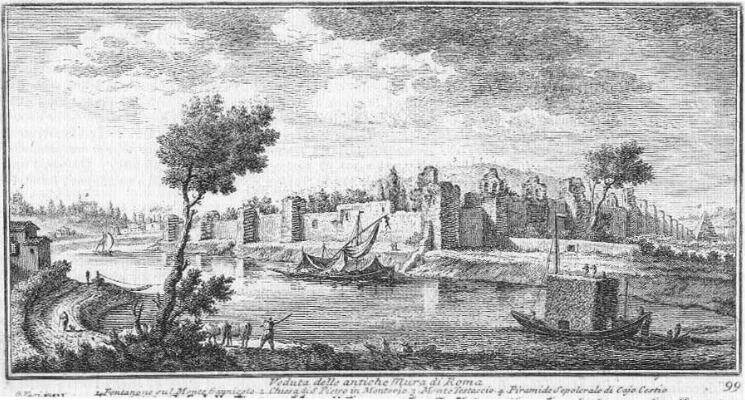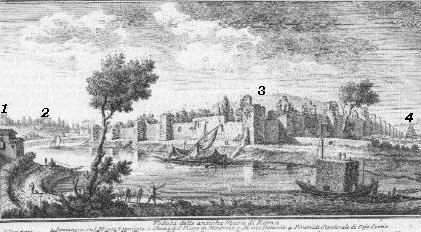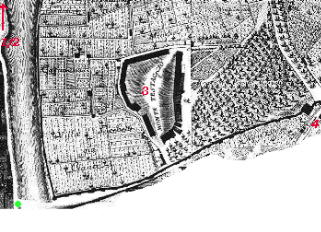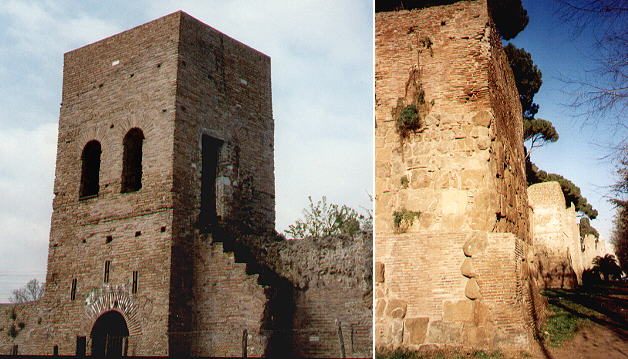  Veduta delle antiche Mura di Roma (Book 5) (Map C4) (Day 5) (View D7) and (View C12) (Rione Ripa) In this page:
The view shows the rather large boats which were used to supply Rome
from the sea. Behind the walls which protected also the river front Vasi
shows Monte Testaccio the "artificial" eighth hill of Rome. The view is taken from the green dot in the small 1748 map here below.
In the description below the plate Vasi made reference to: 1) Fontanone dell'Acqua Paola;
2) S. Pietro in Montorio; 3) Monte Testaccio; 4) Sepolcro di Caio Cestio.
1), 2), and 4) are shown in detail in other pages.
The picture is taken from the railway bridge between Trastevere and Ostiense Railway Stations. It crosses the river exactly at the angle made by the old walls.
One tower is all that is left of the walls on the river, whilst most of the walls leading to Porta S. Paolo have been preserved.
Testae was the name given to the amphoras (see background)
used to bring liquids (chiefly oil) to Rome from the provinces of the Empire.
Large warehouses (horrea) at the foot of the Aventine were built
to store all the commodities. The broken testae were piled up outside
the horrea and year after year they built a sort of hill (as symbolized in a modern fountain) with even
a scanty vegetation.
Next plate in Book 5: Monasterio di S. Paolo fuori le mura Next step in Day 5 itinerary: Monte Aventino e Vestigi del Ponte Sublicio Next step in your tour of Rione Ripa: S. Maria del Priorato
Go
to |
All images © 1999 - 2003 by Roberto Piperno. Write to romapip@quipo.it






